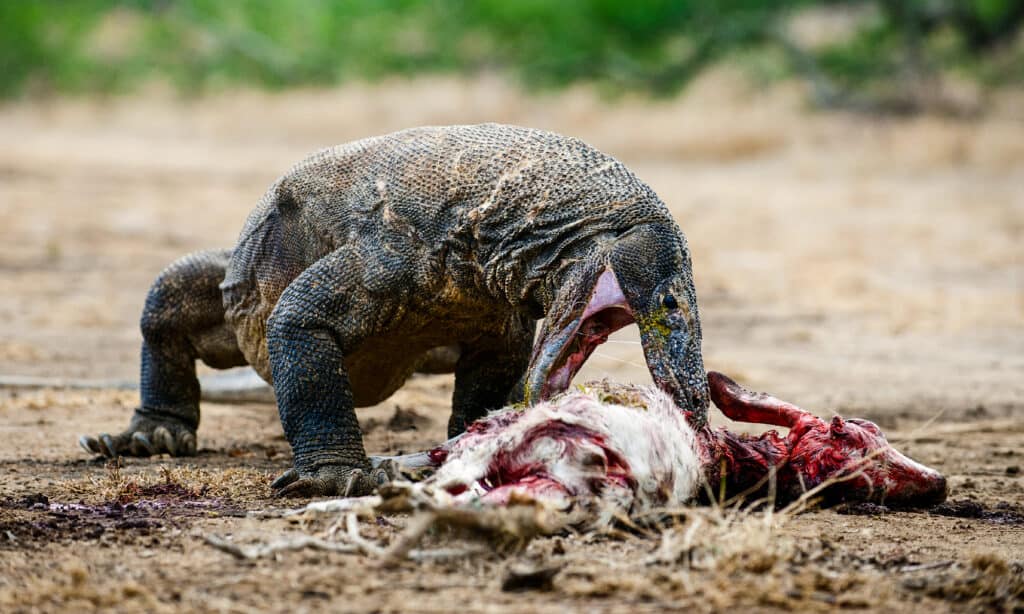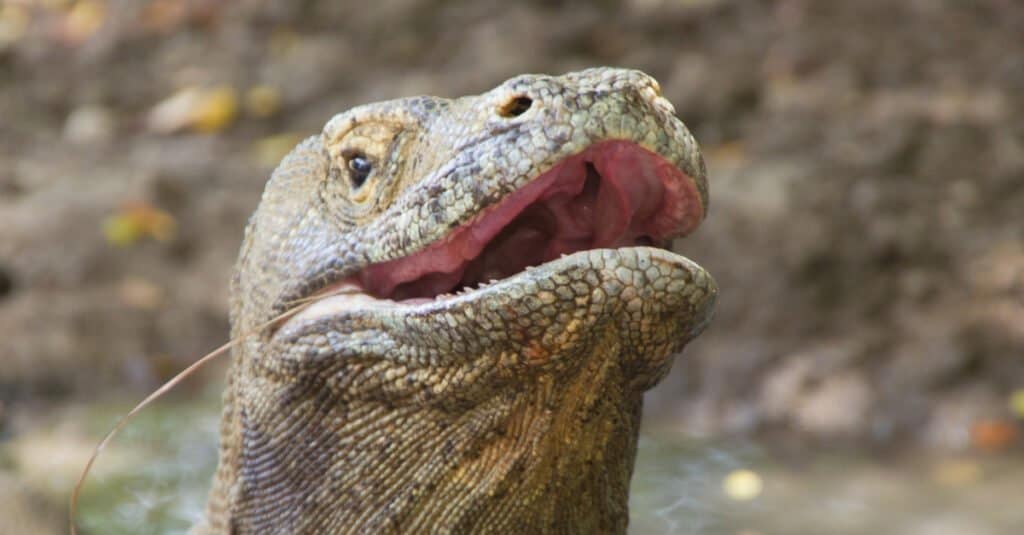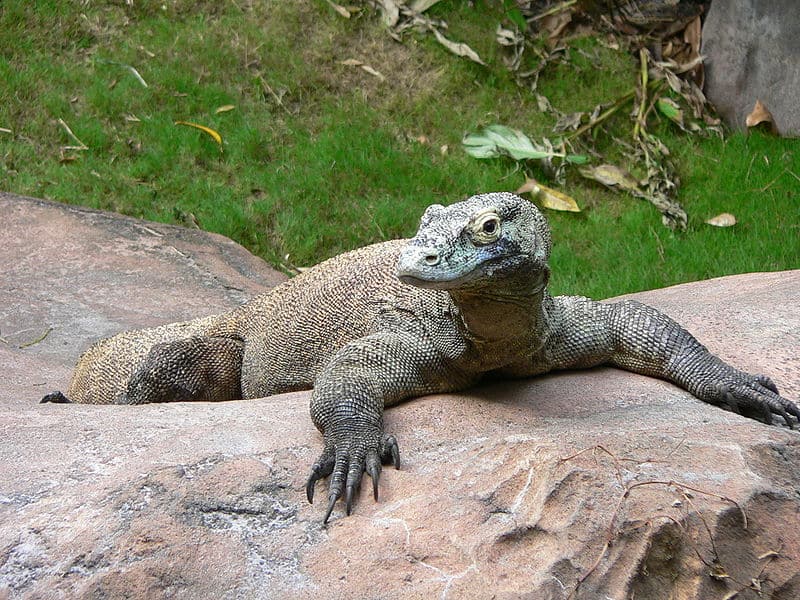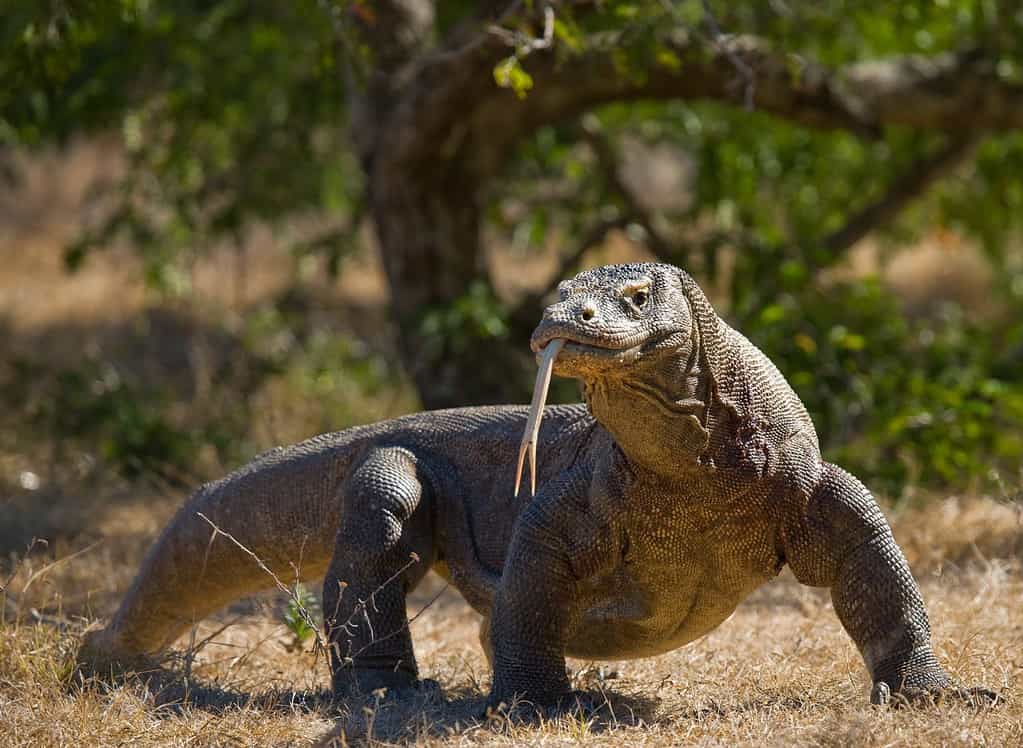Continue reading for our analysis...

If you have pets, picking up poop is just a regular part of your life. But when you’ve booked a hotel away from home and need a place to rest, you don’t want an animal invading your space — especially not a poopy Komodo dragon! However, the man in the video below had to deal with this exact scenario.
How Do Komodo Dragons Digest Their Food?

Komodo dragons will eat almost any type of meat.
©Sergey Uryadnikov/Shutterstock.com
Bacteria and stomach acid work double time in a Komodo dragon’s stomach. These huge reptiles are known for devouring their food whole. Sure, they can chomp on it to break it up into smaller pieces. But they are notorious for just swallowing entire animals during mealtime. We’re talking animals like goats and turtles (with their incredibly tough shells!). Sometimes, these dragons even vomit when they can’t digest tougher bits like bones.
Are Komodo Dragons Friendly?

Komodo dragons have sharp, serrated teeth (perfect for tearing through flesh).
©vladivlad/Shutterstock.com
While there are some people who keep Komodo dragons as pets and attribute human characteristics to them, these are wild animals not meant to be domesticated. They are not “friendly” in the sense that you might understand, like happily greeting you when there’s a chance encounter or opening the door for you as you enter a store. These large reptiles are territorial, they have serrated teeth, and their preference when eating prey is to swallow it whole.
Komodo Dragon Crashes Man’s Hotel Room

Komodo Dragons are quite territorial.
©Raul654 / Creative Commons – Original
When the video below starts, you get clued in. Mark MacEwen is the man whose hotel room has been invaded. He’s spent all day filming this exact type of creature except he’s used to seeing them in the wild —not so much in the space serving as his temporary home. He and a worker enter the room cautiously. The worker has a long, forked stick in hand as he approaches the restroom in the hotel room. When they open the door to the restroom, you can see the dragon’s front leg.
It’s an ominous sight, considering how big these reptiles are. “It’s not quite what you expect to find when you get to the toilet,” MacEwen says, still bewildered by the day’s events (despite his day job!). They don’t know exactly how to remove it, considering it looks unnervingly cozy. However, they devise a plan to put a bit of meat at the end of a rope in hopes of luring it out the front door. But alas, the dragon can’t just eat the meat and go. It has to ‘go’ (smack dab in the center of the room) first!
How Large Do Komodo Dragons Get?

Komodo dragons are the largest lizards on Earth.
©GUDKOV ANDREY/Shutterstock.com
There are 80 recognized extant species of monitor lizards which are native to Africa, Asia, and Oceania. One species–the West African Nile monitor–is an invasive one in the Americas. Of all of the various types of monitor lizards, the Komodo dragon is the largest. Additionally, it’s the largest species of lizard in the world. The average weight of an adult male monitor lizard ranges from 174 to 201 lbs, while the female averages 150 to 161 lbs. Length varies from 8.5 feet long for males to 7.5 feet for females.
The largest captive Komodo dragon weighed 366 lbs (with food in its belly) and measured 10.3 feet long. The largest wild Komodo dragon was 10 feet long with a weight of 366 lbs (with food in its belly). The heaviest ever on record weighed 193 lbs. These animals can weigh more if they are carrying a large meal in their stomachs.
Thank you for reading! Have some feedback for us? Contact the AZ Animals editorial team.







